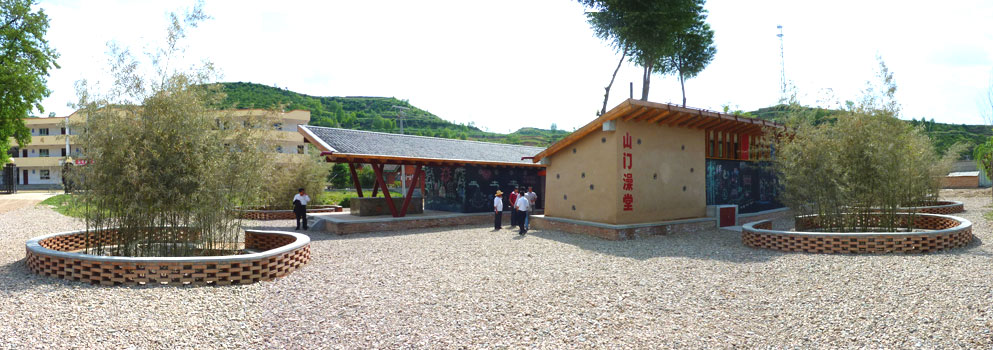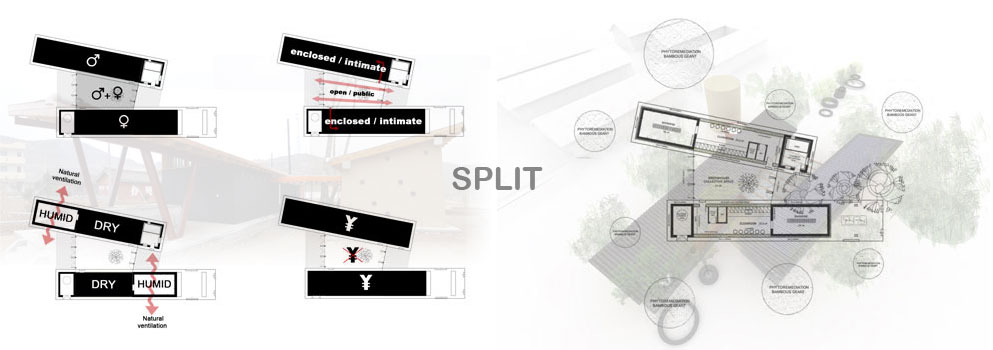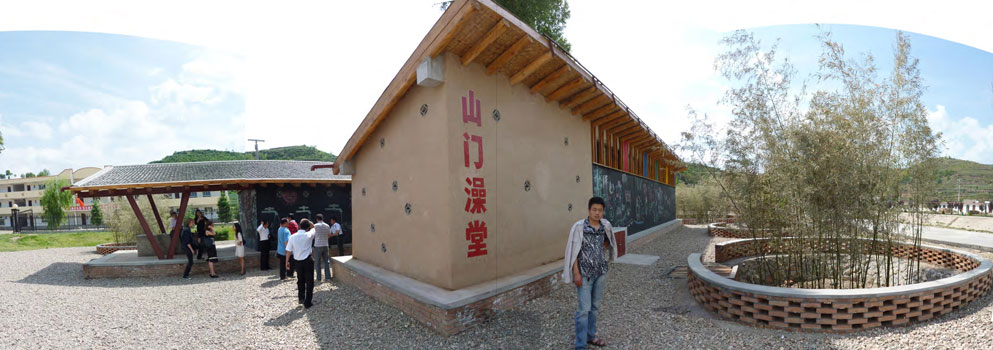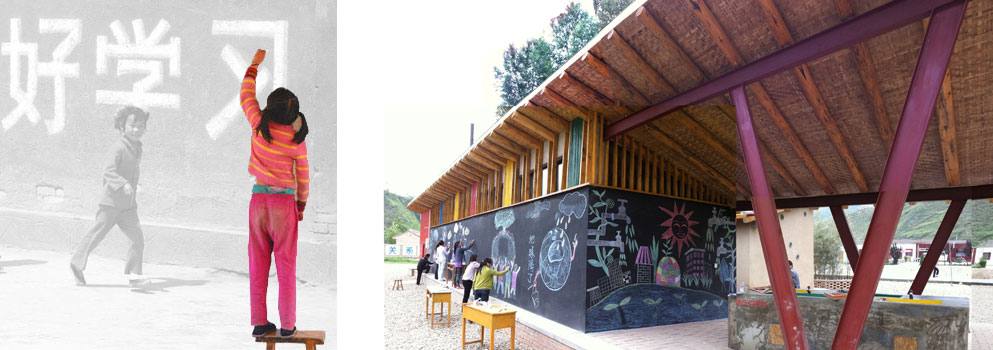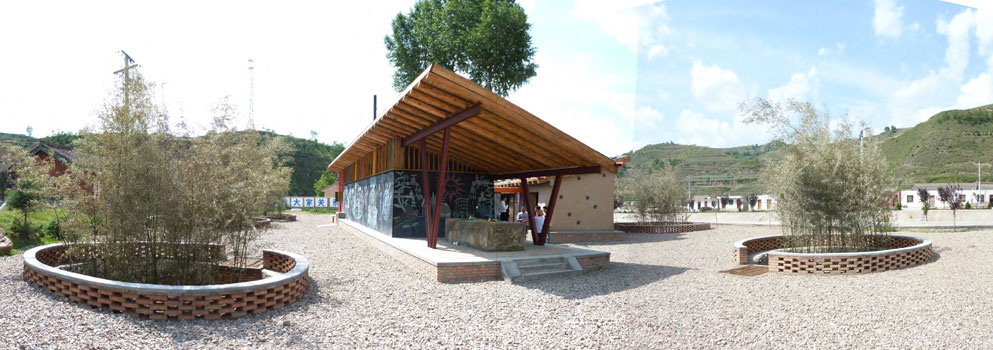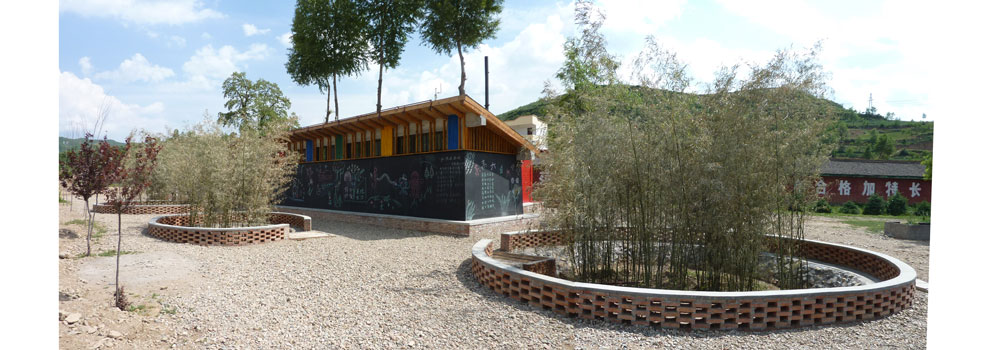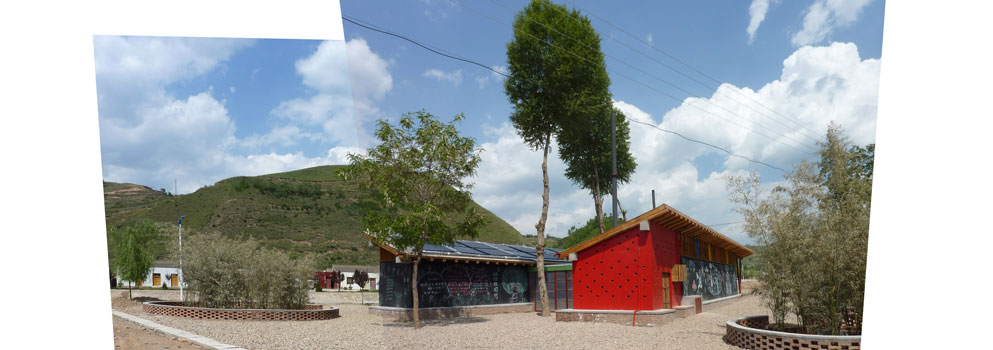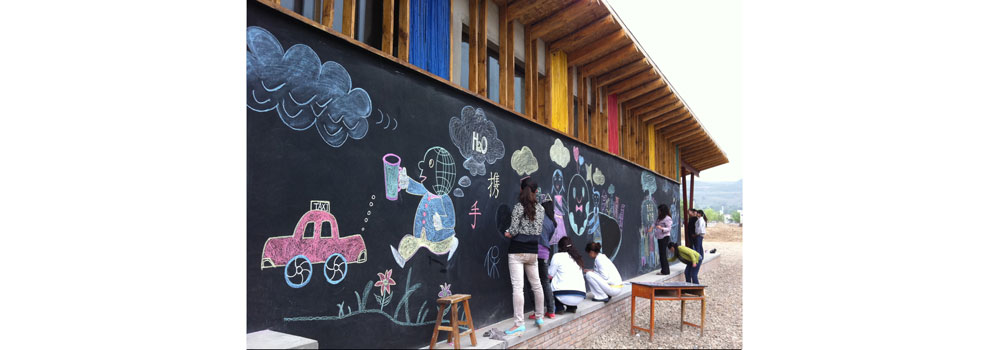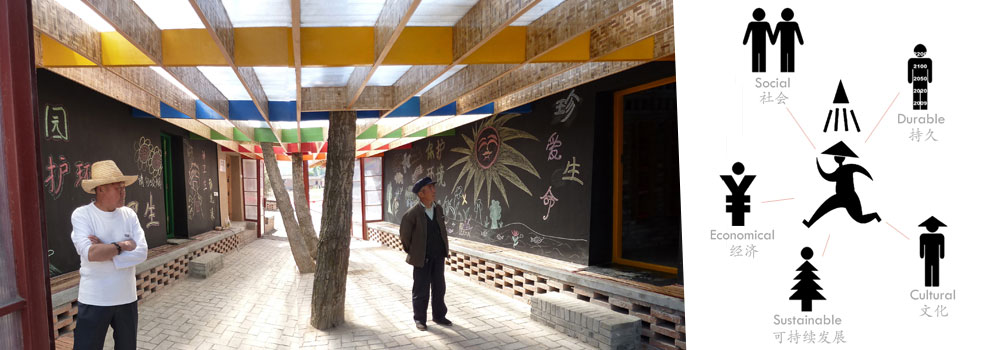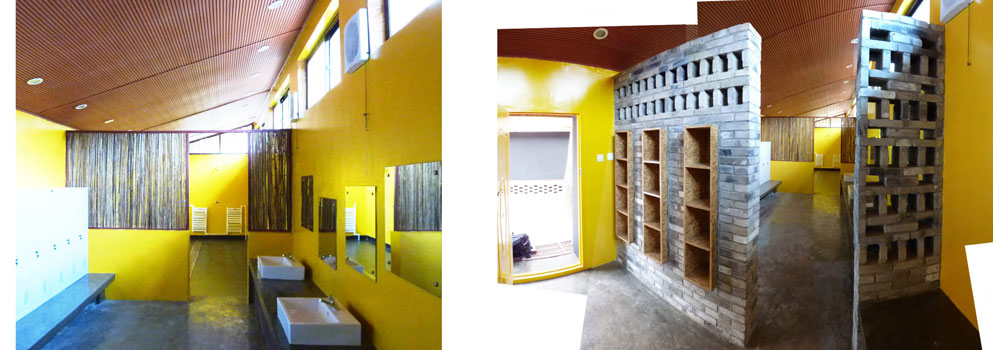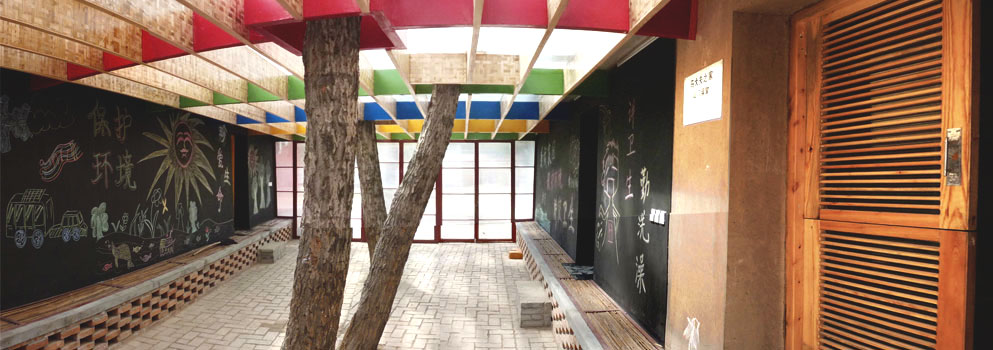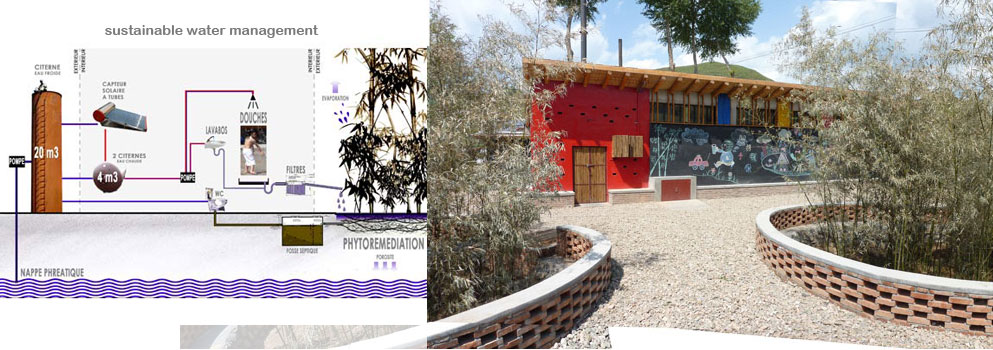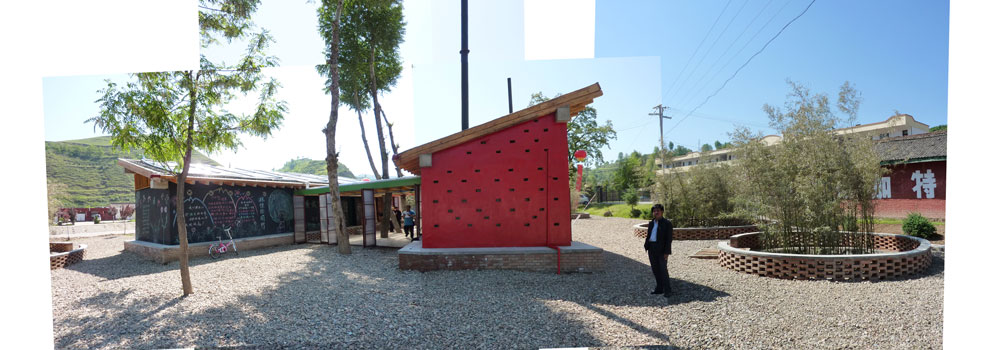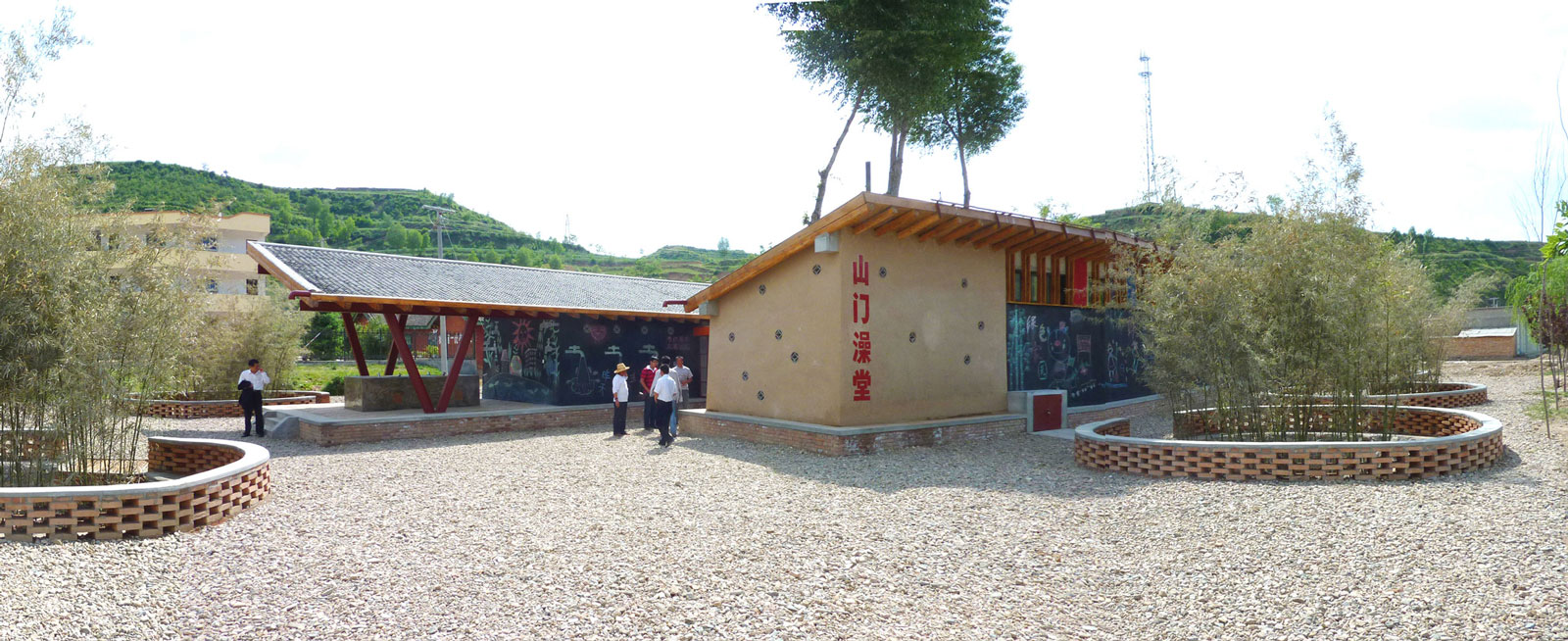

. . . Split Bathhouse . . .
BaO collaborated with Madaifu, an association working with children in difficult familial situations in Gansu province. Shanmen primary and secondary schools asked us to help them build a bathhouse that could be used by the 700 school kids to avoid disease spreading and improve overall sanitary situation. The bathhouse would be used during the week by the schools and during the weekends by the villagers (more than 5000 inhabitants in the vicinity).
People in this region have no bathroom in their homes and sanitary public equipments are scarce ; in this case, the closest bathhouse is 30km away. Shanmen is one of these villages, wedged far in the mountain, transforming rapidly and modernizing its infrastructures. Earth traditional houses are being replaced by squared brick blocks with white tiled facades and blue-tinted windows aggregating along the new roads, cluster of neatly aligned new style village houses appear, few multistory buildings are erected there and there, etc... Nevertheless, no public equipments, no public spaces or community facilities is being implemented. The split bathhouse is a manifesto for alternative developement routes and the creation of public services triggering community bounds.
:: Split bathhouse ::
The project is split into two distinct buildings for men and women linked by a low cost greenhouse. The open shared space located in the transparent greenhouse gives access to the bathing aisles. The two inverted blocks containing the cloakrooms, dry toilets, and shower spaces are turned outward to bring light through a continuous high windows strip and extended on both ends to permit natural ventilation. Our intention of creating public spaces all around what had to be highly intimate buildings resulted in setting both shower blocks on a higher plinth that simultaneously permitted the creation of seats all around the buildings. We wanted the facades of the buildings to be active assets in the project, places for expression or for play. The blind walls enveloping the men and women aisles are covered with blackboard to enable the school children to draw on, write on, play with, play on the building. The facade will be continuously transforming and evolving with the creativity of the children.
:: Water cycle ::
Since neither public water supply nor drainage systems were existing, the whole bathhouse had to be designed as an autonomous entity. We designed an ecological water management cycle to provide required water, heat it, treat and filter it before it returns to the ground.
After being pumped from underground, the water is stored in a 20m3 tank that supplies the boiler or the 100m2 of solar water heating panels of the bathhouse. Heated and used in the showers and the washbasins, the waste water then exits the building to reach a series of phytoremediation basins. Those bamboo planted areas will treat and purify the wastewater with a natural process occurring in the rhizomes. Bacterias living on the roots kill microbes and clean waste water before it is being either assimilated by the plant or return to the ground waters.
The Shanmen Split bathhouse project received an honorable mention in the Urbaninform competition, architecture for social investment, MOMA New York.
. . . . . . . . . . . . . . . . . . . . . . . . . . . . . . . . . . . . . . . . . . . . . . . . . . . . . . . . . . . . . . . . . . . . . . . . . .

